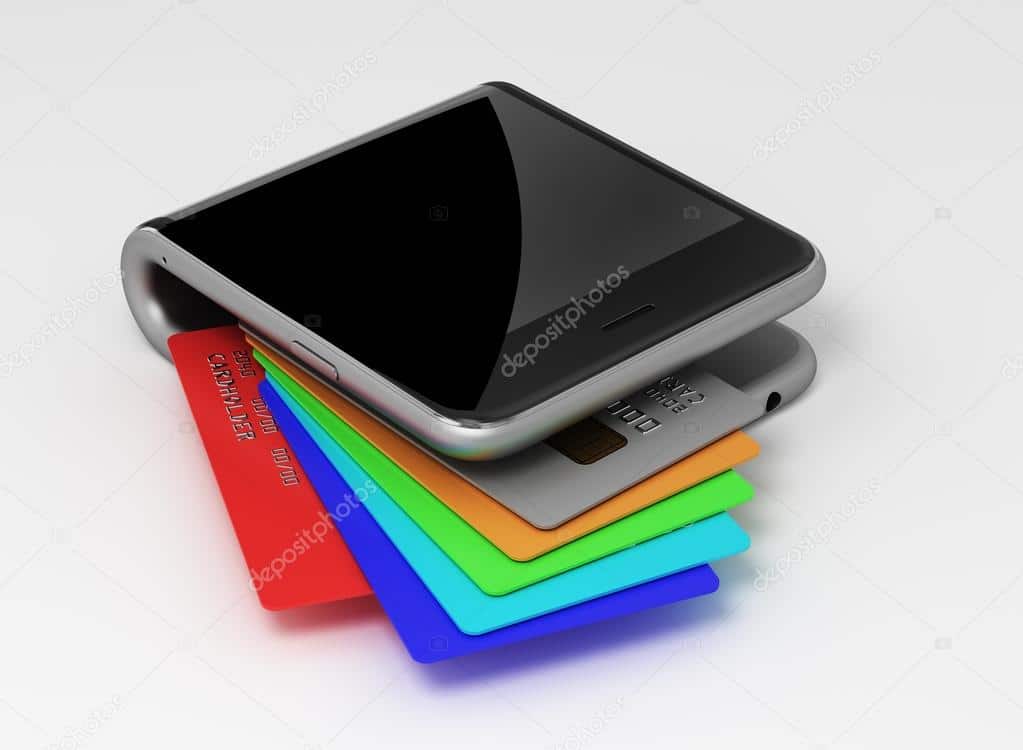When I was a child, my father used to carry around the most oversized stuffed wallet because he had so many credit cards and paperwork he shoved in them to keep track of. Maybe you can relate?
While I may not be the best minimalist, I hate having a fat wallet to sit on or bulge in my pocket, having to sift through all my membership cards, or other things I may need on hand. Luckily for you, there’s something called a digital wallet (or electronic wallet). These types of wallets are financial transaction applications that run on your smartphones and other gadgets. It securely stores your payment information and passwords for you to make things hassle free and more secure.
All you need to do is input your financial information and store your credit cards, debit cards, or other bank account information and then you’re able to use your device to make purchases either online or in stores.
The great thing about digital wallets is that they can store multiple items including:
- Gift cards
- Membership cards
- Loyalty cards
- Coupons
- Event Tickets
- Plane and transit tickets
- Hotel reservations
- Driver’s license
- Identification cards
- Car keys
How a Digital Wallet Works
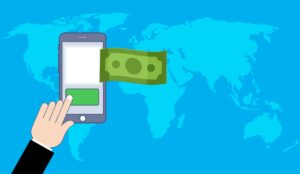
Digital wallets are apps that are designed to eliminate the need to carry a physical wallet simply by storing all of a cswalleonsumer’s payment information securely and compactly. They use a smartphone’s capabilities such as Bluetooth, Wi-Fi, and magnetic signals to transmit payment data securely from your device to a point of sale that has been designed to read the data and connect using these different signals.
There are three types of technologies used for these fiscal transactions through your digital wallet:
- QR codes: Quick response codes are similar to barcodes at a grocery store. They are little white squares with a bunch of randomized dots that store specific information, like a menu for a restaurant, or how much something costs at a store. You use your smartphones camera to scan and read the information to initiate payment.
- Near field communication (NFC): NFC is the most common form of technology you see in stores today. It is what most people refer to as tap-to-pay. It allows to smart devices to connect and transfer information using electromagnetic signals. These type of technology has a limited range, and requires both devices to be within an inch and a half (4 centimeters) from each other to connect.
- Magnetic secure transmission (MST): Samsung Pay had a patent on this technology before they decided to get rid of it for future usage after the Samsung Galaxy S20 series. This technology used the same magnetic frequency reading technology that read your credit card when you swiped it through a point of sale. It would work on almost all point of sale devices that did not have the NFC technology.
Why Use a Digital Wallet Instead of a Physical Wallet
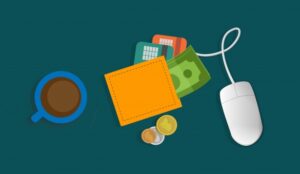
The best advantage you may find from digital wallets is that it limits the amount of financial or personal information you need to carry around when you go about your day. If you place everything on your digital wallet, you no longer need to carry physical cards or even a wallet. Plus, there’s no chance of you losing a card falling out, or forgetting it at a place of business or in an ATM machine. Heck, you won’t even lose your wallet anymore.
Conveniently enough, a digital wallet also allows businesses and consumers worldwide to accept payments, receive funds, or send and receive money from friends and family if you need to pay them back, or ask for a quick loan.
You don’t even require a bank account at a physical branch anymore. Many companies such as Chime and other banks have gone completely digital. Now you have the ability to place your funds in an online-only bank, and are no longer limited to specific communities to access financial service.
The best advantage of a digital wallet in my opinion, is that they are much more secure than a physical wallet which can be stolen easily. In most cases, when you store a financial card such as a debit or credit card on the digital wallet, it will create a new set of numbers that represent that card and connect to the financial institution, so that if a company’s information is ever hacked, your financial information will still be secure.
The only security issue with a digital wallet is if you work with a provider that does not have enough credibility or an established reputation. The other issue is if your phone isn’t password-protected, you risk giving someone full access to all your financial information if you lose your phone. Although most wallets now require a secondary passcode to access as well.
Of course, not all local business you may prefer to shop at or want to shop at, might not have a point of sale that accepts this technology yet.
The Most Common Digital Wallets
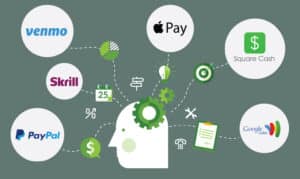
There are several brands of digital wallets available. Here are some of the most well-known:
- Cash App
- ApplePay
- Google Wallet
- Samsung Pay
- PayPal
- Venmo
- AliPay
- Walmart Pay
- Dwolla
- Vodafone-M-Pesa
For the most part, these digital wallets generally do the same thing. However, they usually try to attempt to differentiate themselves from their competitors using various methods. For example, Google’s digital wallet service allows you to add funds directly to the wallet on your phone or device. Then, you can spend this cash in-store and online at businesses that accept Google payments.
Apple, on the other hand, entered into a strategic partnership with Goldman Sachs to issue Apple credit cards and expand its ApplePay services.
1. App for Cash Transactions: CashApp
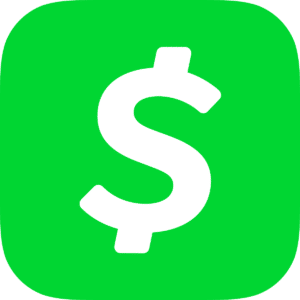
CashApp is probably one of the most well known peer-to-peer payment app. It is also a form of digital wallet that you can use. CashApp is not a bank, but provides financial services through its banking partners. Cash App is a financial services platform, not a bank.
This app is one of those digital platforms that allows you to send and receive money anytime, anywhere to almost anyone. It’s instant, and the best part, it’s free. All you need to get started is a $cashtag, which is basically a username with a $ sign at the beginning of it. This $cashtag is in the form of a QR code.
With an account with CashApp, you can receive paychecks up to 48 hours early. No more payday loans. The best part, you get 3 free ATM withdrawals per month when you have at least $300 coming into your account each month.
Investments are also a breeze with CashApp, as it was created to make investing in stocks and bitcoin. You only need a dollar to buy what they call fractional shares, or smaller pieces of stocks, commission-free. You can choose from a variety of stocks. It even gives you insights on your investments, and allows you to put your investments on auto invest.
Security features with CashApp are also upgraded to protect the millions of users and transactions each year. Verification requirements to data encryption, they have a lot of security to keep your money and information safe. It even has fraud protection for suspicious activity.
2. Take a Page from the Big Apple with ApplePay & the Apple Wallet App
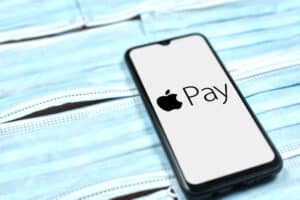
Apple wants to do it all. Digital Payments are no exception.
With ApplePay, you have another digital wallet that replaces your physical cards and an easier way to make more secure payments, whether in-store, online, or using a peer-to-peer transaction.
They even give you a 2% cash back on every purchase.
No hassle of counting your cash or thumbing through all your credit cards. It’s accepted on millions of websites and apps, and now with the iOS16.1 update, you can use it in stores for NFC purchases.
PayPal is a peer-to-peer payment and money exchange platform, but it has a digital wallet included in its app
3. Google Me this, Google me that, find my Google Wallet

Just like Apple, Google has its own version of a digital wallet for Android users respectively called, Google Wallet.
With Google Wallet, you can carry metro cards to pay for public transportation, plane tickets, and bus passes all on your phone. It will even give you flight updates for delayed departures, if your flight has changed. You can even load your transit balance directly in Google Maps. That way you’ll know if your funds are running low before it’s too late.
Google allows you to add almost every single loyalty card from most businesses, so you’ll never miss a chance to save or add reward points. It will even begin to notify you the day of an event, so you won’t miss the opening act or first quarter of a game.
As with other digital wallets, Google Wallet let’s you store your digital car keys from select models right in your phone, so you don’t have a huge bundle of keys to hold on to. Although, one of the nicest features as of late, due to the global pandemic of Covid-19, Google Wallet, even allows you to hold and display your vaccination card, so you don’t have to keep carrying and tattering a piece of paper.
Of course, a digital wallet isn’t a wallet without having an ID. Google Wallet, allows you to add your driver’s license and student ID’s for certain State Colleges, to make proving who you are a whole lot easier. Although not all states accept this, and since it’s fairly new to most people, it may not be accepted as a real ID.
Google Wallet is fast and secure, for easy payments and transactions. The often used Google Pay method also works, but is primarily used for peer-to-peer transactions between friends or family members.
Your personal information is as secure as ever with Google Wallet, with the two step verification process, and immediate data erase if your phone is lost. Your real card numbers are hidden from merchants, for peace of mind. These advanced security and easy to use privacy controls allow you to stay safe for everyday use.
4. Defy All Wallets Expectations with Samsung Pay
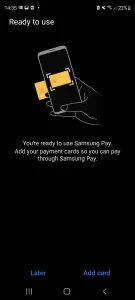
What was once the best digital wallet in my personal opinion due to a huge difference in technology, is now placed as just another digital wallet that doesn’t seem to set apart that much from the others.
When Samsung Pay came out, it used MST and NFC to allow fiscal transactions. With the MST, they were able to use this digital wallet to make payments at virtually any retailer, including the ones that didn’t have a point of sale device that utilized NFC. This is because it allowed your smartphone to emit the same magnetic frequency signals as your credit card did, when you swiped it through the card reader.
Unfortunately, Samsung thought that most retailers are converting to NFC point of sale readers, and there is no longer a need for this technology, and removed it from future devices after the Samsung Galaxy S20 flagship series.
Like Google Wallet, Samsung has created it’s own version of a wallet, entitled Samsung Wallet, that works with Samsung Pay. Samsung Wallet comes with something called a vaccine pass, which is a digital version of the COVID-19 vaccine card that you can add to Samsung Pay through one of it’s various partners.
Like other Digital payment options, Samsung pay lets you carry credit cards, debit cards, gift cards, and membership cards on your device. It uses your camera on your smartphone to scan the barcode or the actual card, and it will plug the information in for you. Choose from most Visa, Mastercard, or American Express cards, as Samsung Pay supports over 1,000 banks and credit unions, and continually updates them to support your local branch.
Samsung also partnered with the company SoFI to create their own lending service for their very own debit card, with similar cash back rewards of a credit card and a competitive high savings interest. Samsung Pay also gives you a point system for Samsung Rewards, which allows you to make in-app purchases with ease.
5. We all Know the Name: PayPal
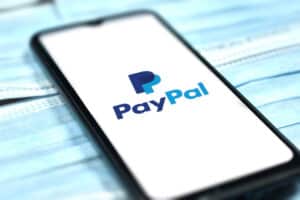
When PayPal came out in the late 1990’s, it was originally created security software for hand-held devices, and focused on secure ways to transfer information. While it didn’t have as much luck with this focus, PayPal soon began to focus more on the secure fiscal transactions using their technology, focusing on creating a digital wallet services.
If you’ve ever made an online purchase at a store or on eBay, you’ve most likely used PayPal. The idea behind PayPal is simple, it is a digital wallet system that grants you the ability to transfer money electronically between both individuals and businesses. Users can send or receive transactions for online websites, purchase or sell goods and services, or donate money to charities.
You don’t even need to have a PayPal account to use its services, although if you do have an account, users can set currency conversion rates in the setting for all financial transactions.
Over the last few years, PayPal now allows customers to use connect cryptocurrencies to their accounts to use for shopping at the 26 million places that accept PayPal. You can even trade, or buy cryptocurrency using PayPal.
As of 2022, PayPal operates in 202 markets and has 426 million active, registered accounts. PayPal allows customers to send, receive, and hold funds in 25 currencies worldwide.
Do I Need a Digital Wallet?
You don’t necessarily need a digital wallet. However, they offer a convenient way to pay for your purchases because you don’t have to carry credit and debit cards around. This also increases card security—you can’t lose your cards if you don’t carry them, and your financial information more secure with encryptions.
